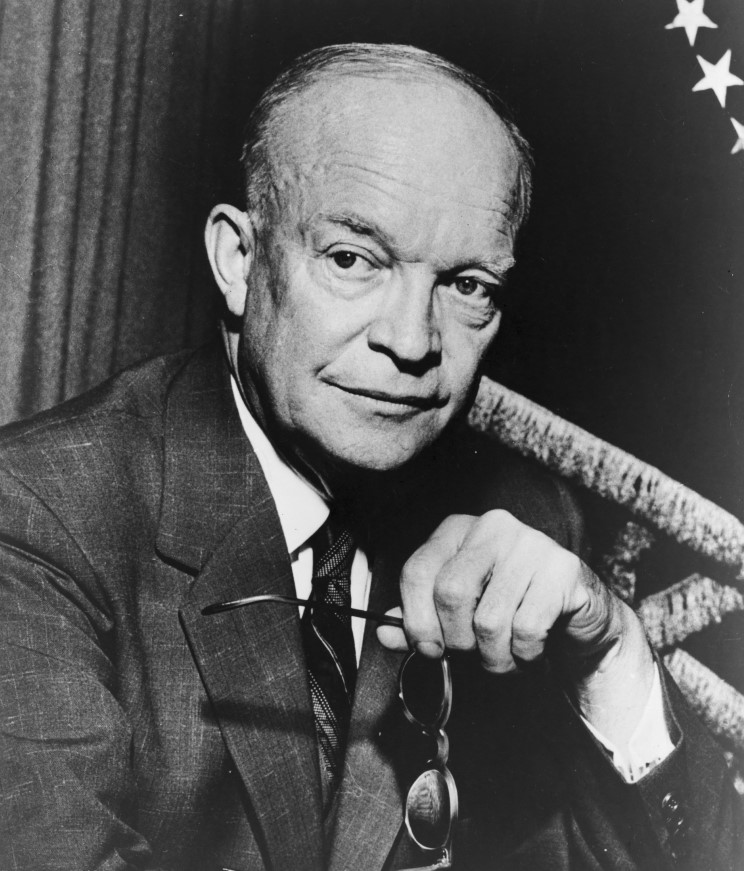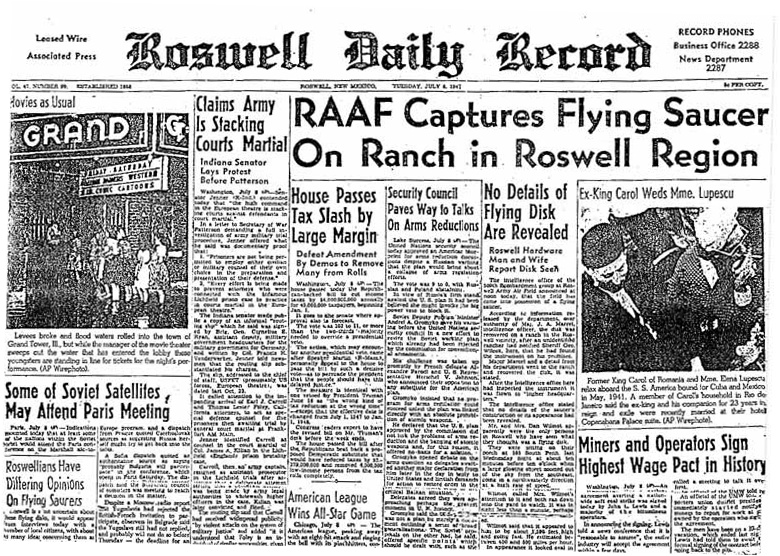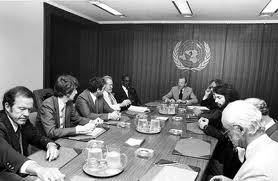Dr. Josef Allen Hynek (May 1, 1910 – April 27, 1986) was a
United States astronomer, professor, and ufologist. He is perhaps best
remembered for his UFO research. Hynek acted as scientific adviser to UFO
studies undertaken by the U.S. Air Force under three consecutive names:
1.Project Sign (1947–1949),
2.Project Grudge (1949–1952), and
3.Project Blue Book (1952 to 1969).
For decades afterwards, he conducted his own independent UFO
research, developing the Close Encounter classification system, and is widely
considered the father of the concept of scientific analysis of both reports
and, especially, trace evidence purportedly left by UFOs.
Early life and career
Hynek was born in Chicago to Czech parents. In 1931, Hynek
received a B.S. from the University of Chicago. In 1935, he completed his Ph.D.
in astrophysics at Yerkes Observatory. He joined the Department of Physics and
Astronomy at Ohio State University in 1936. He specialized in the study of
stellar evolution and in the identification of spectroscopic binaries.
During World War II, Hynek was a civilian scientist at the
Johns Hopkins Applied Physics Laboratory, where he helped to develop the United
States Navy's radio proximity fuze.
After the war, Hynek returned to the Department of Physics
and Astronomy at Ohio State, rising to full professor in 1950.
In 1956, he left to join Professor Fred Whipple, the Harvard
astronomer, at the Smithsonian Astrophysical Observatory, which had combined
with the Harvard Observatory at Harvard. Hynek had the assignment of directing
the tracking of an American space satellite, a project for the International
Geophysical Year in 1956 and thereafter. In addition to over 200 teams of amateur
scientists around the world that were part of Operation Moonwatch, there were
also 12 photographic Baker-Nunn stations. A special camera was devised for the
task and a prototype was built and tested and then stripped apart again when,
on Oct. 4, 1957, the Soviet Union launched its first satellite, Sputnik.
After completing his work on the satellite program, Hynek
went back to teaching, taking the position of professor and chairman of the
astronomy department at Northwestern University in 1960.
Hynek's son Joel Hynek is an Oscar winning movie visual
effects supervisor who directed the design of the so-called camouflage effect
from the movie Predator.
Early Involvement in
UFOs
In response to many "flying saucer" sightings
(later unidentified flying objects), the United States Air Force established
Project Sign in 1948; this later became Project Grudge, which in turn became
Project Blue Book in 1952. Hynek was contacted by Project Sign to act as
scientific consultant for their investigation of UFO reports. Hynek would study
a UFO report and subsequently decide if its description of the UFO suggested a
known astronomical object.
When Project Sign hired Hynek, he was initially skeptical of
UFO reports. Hynek suspected that UFO reports were made by unreliable witnesses,
or by persons who had misidentified man-made or natural objects. In 1948, Hynek
said that "the whole subject seems utterly ridiculous," and described
it as a fad that would soon pass.
For the first few years of his UFO studies, Hynek could
safely be described as a debunker. He thought that a great many UFOs could be
explained as prosaic phenomena misidentified by an observer. But beyond such
fairly obvious cases, Hynek often stretched logic to nearly the breaking point
in an attempt to explain away as many UFO reports as possible. In his 1977
book, Hynek admitted that he enjoyed his role as a debunker for the Air Force.
He also noted that debunking was what the Air Force expected of him.
Change of opinion
Hynek's opinions about UFOs began a slow and gradual shift.
After examining hundreds of UFO reports over the decades (including some made
by credible witnesses, including astronomers, pilots, police officers, and
military personnel), Hynek concluded that some reports represented genuine
empirical observations.

Another shift in Hynek's opinions came after conducting an
informal poll of his astronomer colleagues in the early 1950s. Among those he
queried was Dr. Clyde Tombaugh, who discovered the dwarf planet Pluto. Of 44
astronomers, five (over 11 percent) had seen aerial objects that they could not
account for with established, mainstream science[citation needed]. Most of
these astronomers had not widely shared their accounts for fear of ridicule or
of damage to their reputations or careers (Tombaugh was an exception, having
openly discussed his own UFO sightings. Hynek also noted that this 11% figure
was, according to most polls, greater than those in the general public who
claimed to have seen UFOs. Furthermore, the astronomers were presumably more knowledgeable
about observing and evaluating the skies than the general public, so their
observations were arguably more impressive. Hynek was also distressed by what
he regarded as the dismissive or arrogant attitude of many mainstream
scientists towards UFO reports and witnesses.
Early evidence of the shift in Hynek's opinions appeared in
1953, when Hynek wrote an article for the April 1953 issue of the Journal of
the Optical Society of America titled "Unusual Aerial Phenomena,"
which contained what would become perhaps Hynek's best known statement:
"Ridicule is not part of the scientific method, and
people should not be taught that it is. The steady flow of reports, often made
in concert by reliable observers, raises questions of scientific obligation and
responsibility. Is there ... any residue that is worthy of scientific
attention? Or, if there isn't, does not an obligation exist to say so to the
public—not in words of open ridicule but seriously, to keep faith with the
trust the public places in science and scientists?"
The essay was very carefully worded: Hynek never states that
UFOs are an extraordinary phenomenon. But it is clear that, whatever his own
views, Hynek was increasingly distressed by what he saw as the superficial
manner most scientists looked at UFOs. In 1953, Hynek was an associate member
of the Robertson Panel, which concluded that there was nothing anomalous about
UFOs, and that a public relations campaign should be undertaken to debunk the
subject and reduce public interest. Hynek would later come to lament that the
Robertson Panel had helped make UFOs a disreputable field of study.
When the UFO reports continued at a steady pace, Hynek
devoted some time to studying the reports and determined that some were deeply
puzzling, even after considerable study. He once said, "As a scientist I
must be mindful of the lessons of the past; all too often it has happened that
matters of great value to science were overlooked because the new phenomenon
did not fit the accepted scientific outlook of the time."
In a 1985 interview, when asked what caused his change of
opinion, Hynek responded, "Two things, really. One was the completely
negative and unyielding attitude of the Air Force. They wouldn't give UFOs the
chance of existing, even if they were flying up and down the street in broad
daylight. Everything had to have an explanation. I began to resent that, even
though I basically felt the same way, because I still thought they weren't
going about it in the right way. You can't assume that everything is black no
matter what. Secondly, the caliber of the witnesses began to trouble me. Quite
a few instances were reported by military pilots, for example, and I knew them
to be fairly well-trained, so this is when I first began to think that, well,
maybe there was something to all this."
Regardless of his own private views, Hynek was, by and
large, still echoing the post-Ruppelt line of Project Blue Book: There are no
UFOs, and reports can largely be explained as misidentifications.
Hynek remained with Project Sign after it became Project
Grudge (though with far less involvement than with Project Sign). Project
Grudge was replaced with Project Blue Book in early 1952. Hynek continued as
scientific consultant to Project Blue Book. Air Force Captain Edward J. Ruppelt
(Blue Book's first director), held Hynek in high regard: "Dr. Hynek was
one of the most impressive scientists I met while working on the UFO project,
and I met a good many. He didn't do two things that some of them did: give you
the answer before he knew the question; or immediately begin to expound on his
accomplishments in the field of science."
Though Hynek thought Ruppelt was a capable director who
steered Project Blue Book in the right direction, Ruppelt headed Blue Book for
only a few years. Hynek has also stated his opinion that after Ruppelt's
departure, Project Blue Book was little more than a public relations exercise,
further noting that little or no research was undertaken using the scientific
method.
Turnaround
Hynek began occasionally disagreeing publicly with the
conclusions of Blue Book. By the early 1960s—after about a decade and a half of
study—Clark writes that "Hynek's apparent turnaround on the UFO question
was an open secret." Only after Blue Book was formally dissolved did Hynek
speak more openly about his "turnaround."
By his own admission, the soft-spoken Hynek was cautious and
conservative by nature. He speculated that his personality was a factor in the
Air Force keeping him on as a consultant for over two decades.
Some other ufologists thought that Hynek was being
disingenuous or even duplicitous in his turnaround. Physicist Dr. James E.
McDonald, for example, wrote to Hynek in 1970, castigating him for what
McDonald saw as his lapses, and suggesting that, when evaluated by later
generations, retired Marine Corps Major Donald E. Keyhoe would be regarded as a
more objective, honest, and scientific ufologist.
It was during the late stages of Blue Book in the 1960s that
Hynek began speaking openly about his disagreements and disappointments with
the Air Force. Among the cases where he openly dissented with the Air Force
were the highly publicized Portage County UFO chase (where several police
officers chased a UFO for half an hour), and the encounter of Lonnie Zamora. A
police officer, Zamora reported an encounter with a metallic, egg-shaped
aircraft near Socorro, New Mexico.
In late March 1966, in Michigan, two days of mass UFO
sightings were reported, and received significant publicity. After studying the
reports, Hynek offered a provisional hypothesis for some of the sightings: a
few of about 100 witnesses had mistaken swamp gas for something more
spectacular. At the press conference where he made his announcement, Hynek
repeatedly and strenuously made the qualification that swamp gas was a
plausible explanation for only a portion of the Michigan UFO reports, and
certainly not for UFO reports in general. But much to his chagrin, Hynek's
qualifications were largely overlooked, and the words "swamp gas"
were repeated ad infinitum in relation to UFO reports. The explanation was
subject to national derision.
Center for UFO
Studies
Hynek was the founder and head of the Center for UFO Studies
(CUFOS). Founded in 1973 (originally in Evanston, Illinois but now based in
Chicago), CUFOS is an organization stressing scientific analysis of UFO cases.
CUFOS's extensive archives include valuable files from civilian research groups
such as NICAP, one of the most popular and credible UFO research groups of the
1950s and 1960s.
Speech before the United
Nations
In November 1978, a statement on UFOs was presented by Dr.
Allen Hynek, in the name of himself, of Dr. Jacques Vallée, and of Dr. Claude
Poher. This speech was prepared and approved by the three authors, before the
United Nations General Assembly. The objective was to initiate a centralized
United Nations UFO authority.
UFO origin hypotheses
In 1973, at the MUFON annual symposium, held in Akron, Ohio,
Hynek began to express his doubts regarding the extraterrestrial (formerly
"interplanetary" or "intergalactic") hypothesis. His main
point led him to the title of his speech: "The Embarrassment of the
Riches." He was aware that the quantity of
UFO sightings was much higher than the Project Blue Book
statistics. Just this puzzled him. "A few good sightings a year, over the
world, would bolster the extraterrestrial hypothesis—but many thousands every
year? From remote regions of space? And to what purpose? To scare us by
stopping cars, and disturbing animals, and puzzling us with their seemingly pointless
antics?"
In 1975, in a paper presented to the Joint Symposium of the
American Institute of Aeronautics & Astronautics in Los Angeles, he wrote,
"If you object, I ask you to explain – quantitatively, not qualitatively –
the reported phenomena of materialization and dematerialization, of shape
changes, of the noiseless hovering in the Earth's gravitational field,
accelerations that – for an appreciable mass – require energy sources far
beyond present capabilities – even theoretical capabilities, the well-known and
often reported E-M (sc. electro-magnetic interference) effect, the psychic
effects on percipients, including purported telepathic communications."
In 1977, at the First International UFO Congress in Chicago,
Hynek presented his thoughts in his speech "What I really believe about
UFOs." "I do believe," he said, "that the UFO phenomenon as
a whole is real, but I do not mean necessarily that it's just one thing. We
must ask whether the diversity of observed UFOs . . . all spring from the same
basic source, as do weather phenomena, which all originate in the
atmosphere", or whether they differ "as a rain shower differs from a
meteor, which in turn differs from a cosmic-ray shower." We must not ask,
Hynek said, what hypothesis can explain the most facts, but we must ask, which
hypothesis can explain the most puzzling facts.
"There is sufficient evidence to defend both the ETI
and the EDI hypothesis," Hynek continued. As evidence for the ETI
(extraterrestrial intelligence) he mentioned, as examples, the radar cases as
good evidence of something solid, and the physical-trace cases. Then he turned
to defending the EDI (extradimensional intelligence) hypothesis. Besides the
aspect of materialization and dematerialization he cited the
"poltergeist" phenomenon experienced by some people after a close
encounter; the photographs of UFOs, sometimes on only one frame, not seen by
the witnesses; the changing form right before the witnesses' eyes; the puzzling
question of telepathic communication; or that in close encounters of the third
kind the creatures seem to be at home in earth's gravity and atmosphere; the
sudden stillness in the presence of the craft; levitation of cars or persons;
the development by some of psychic abilities after an encounter. "Do we have
two aspects of one phenomenon or two different sets of phenomena?" Hynek
asked.
Finally he introduced a third hypothesis. "I hold it
entirely possible," he said, "that a technology exists, which
encompasses both the physical and the psychic, the material and the mental.
There are stars that are millions of years older than the sun. There may be a
civilization that is millions of years more advanced than man's. We have gone
from Kitty Hawk to the moon in some seventy years, but it's possible that a
million-year-old civilization may know something that we don't ... I
hypothesize an 'M&M' technology encompassing the mental and material
realms. The psychic realms, so mysterious to us today, may be an ordinary part
of an advanced technology."
In Hynek and Vallee's 1975 book The Edge of Reality, Hynek
publishes a stereoscopic photograph of a UFO he took during a flight. According
to the book the object stayed in sight long enough for Hynek to unpack his
camera from his luggage and take two exposures. UFO researcher Robert Sheaffer
writes in his book Psychic Vibrations that Hynek seemed to forget that he had
photographed and published these two photographs as he told a reporter for the
Toronto Globe and Mail that he had never seen a UFO. The article quotes Hynek
saying that in all the years he has been looking upward "He has never seen
'what I would so dearly love to see. Oh, the subject has been so ridiculed that
I would never report a UFO even if I did see one - not without a witness'".





























